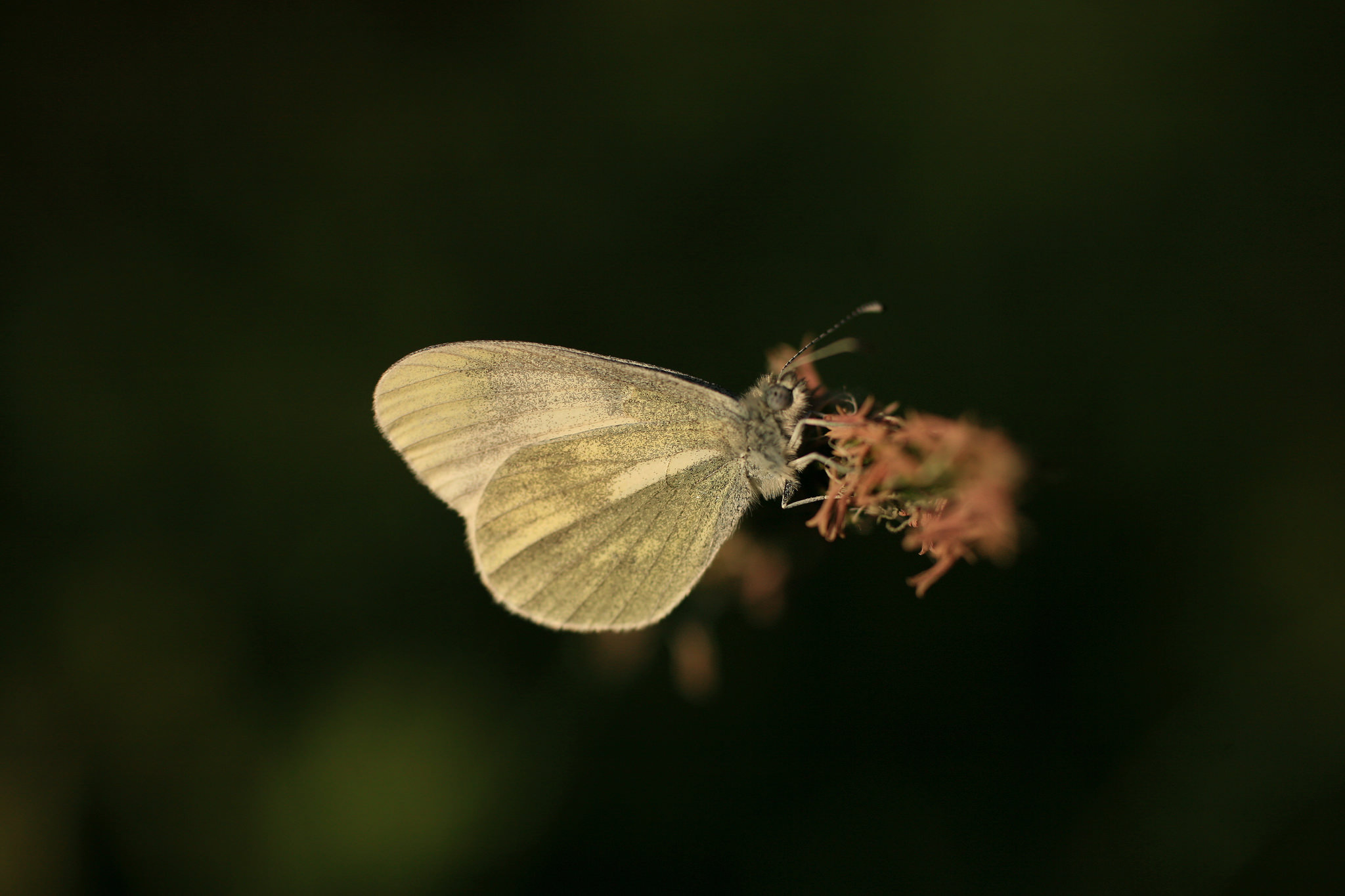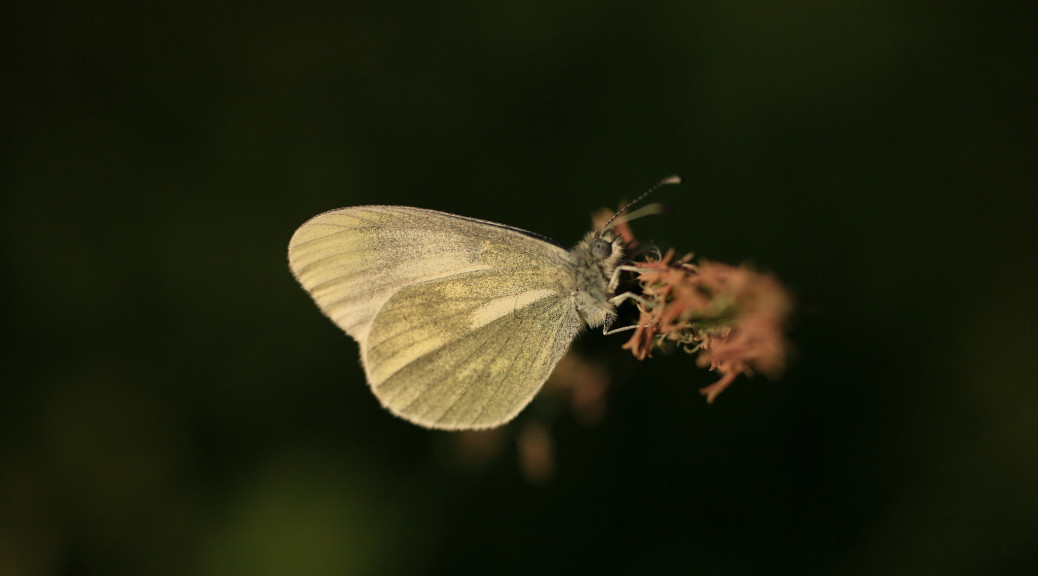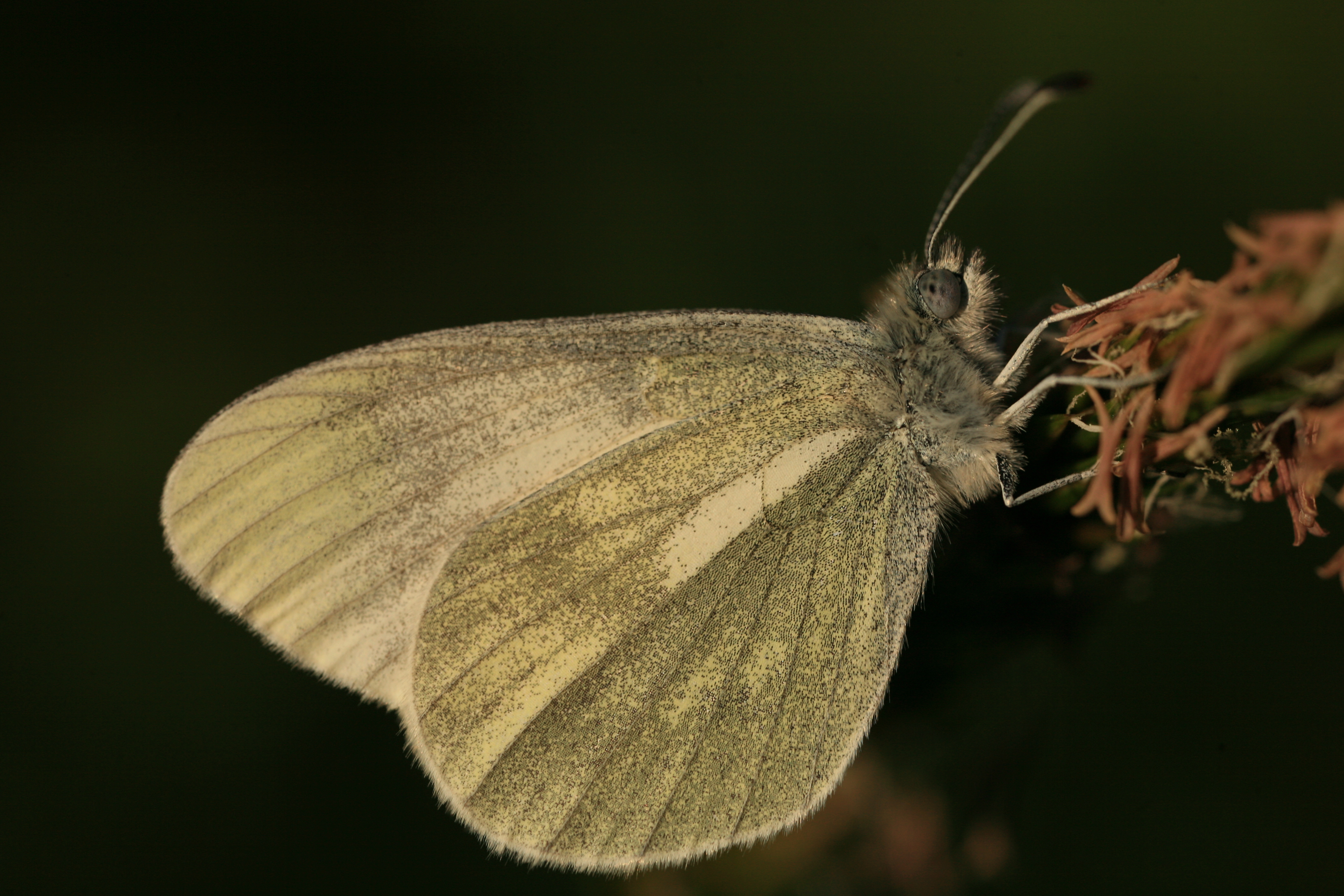
If you happen to see a small white butterfly flying weakly in dampish shaded areas, you are almost certainly looking at a wood white. For wood white keep close to scrub and bushes where shade and dappled sunlight meet. Unlike the other species of white, these are dainty with a lovely rounded profile and, and when seen close up, have a delicate white feathered trim around the wings. They also always rest with their wings closed to make most of their greenish yellow mottled underwings.
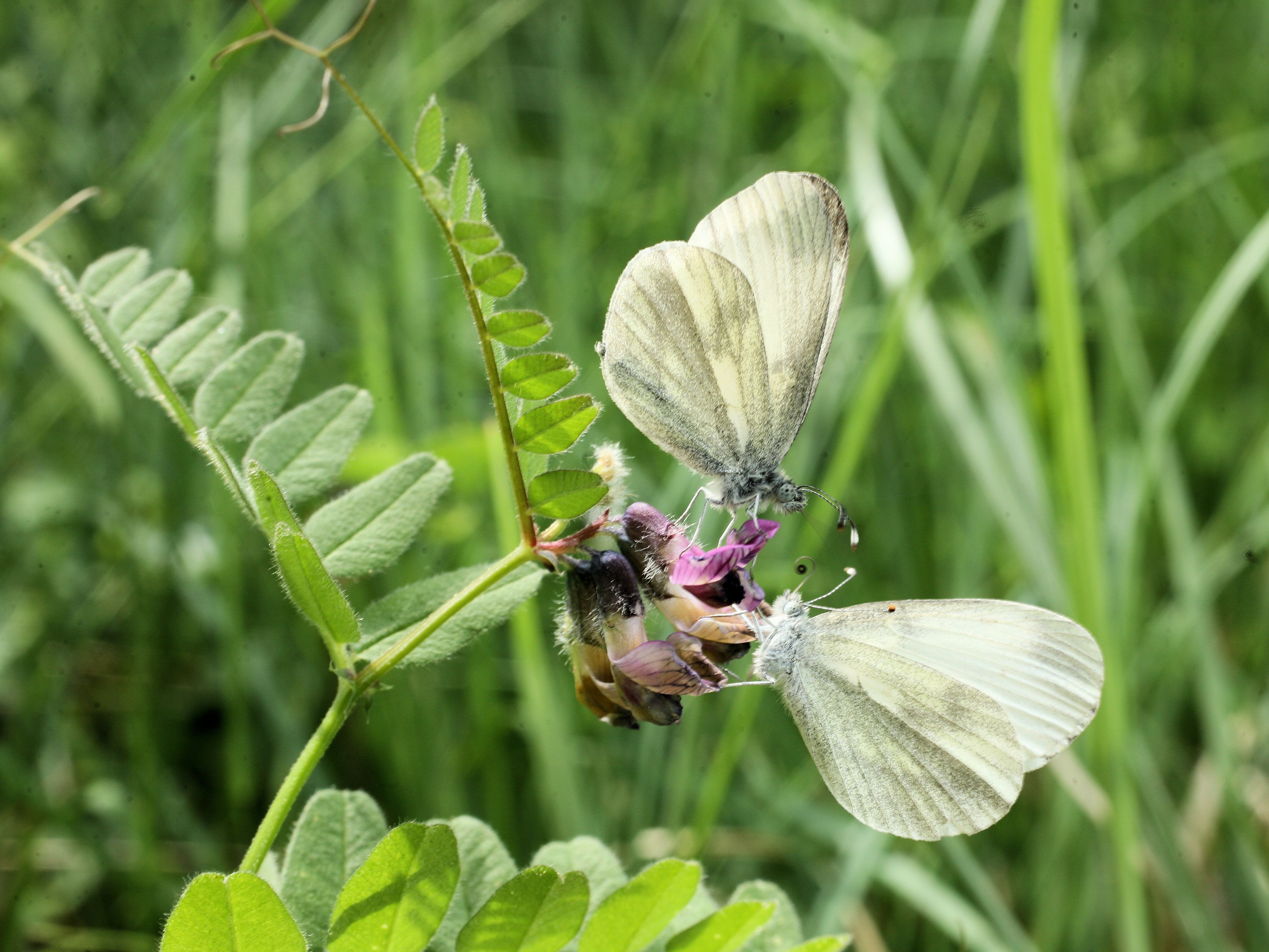
At Glencoum, the forested hill to the south-east of Bramblestown, wood white are a common spring butterfly. An evening walk sees them settling down for the night on the grasses and foliage along the forest path. Their bodies, like pearls, reflecting the last of the sun’s rays before sunset. At the other side of the country, in the Burren, they are also a common sight flying in the shade of the hazel scrub. When I visited the magnificent Slievecarron National Nature Reserve in May, they were the only species of white butterfly to be seen, in amongst the shade of the bushes, unperturbed by the westerly winds that whipped across the exposed limestone.
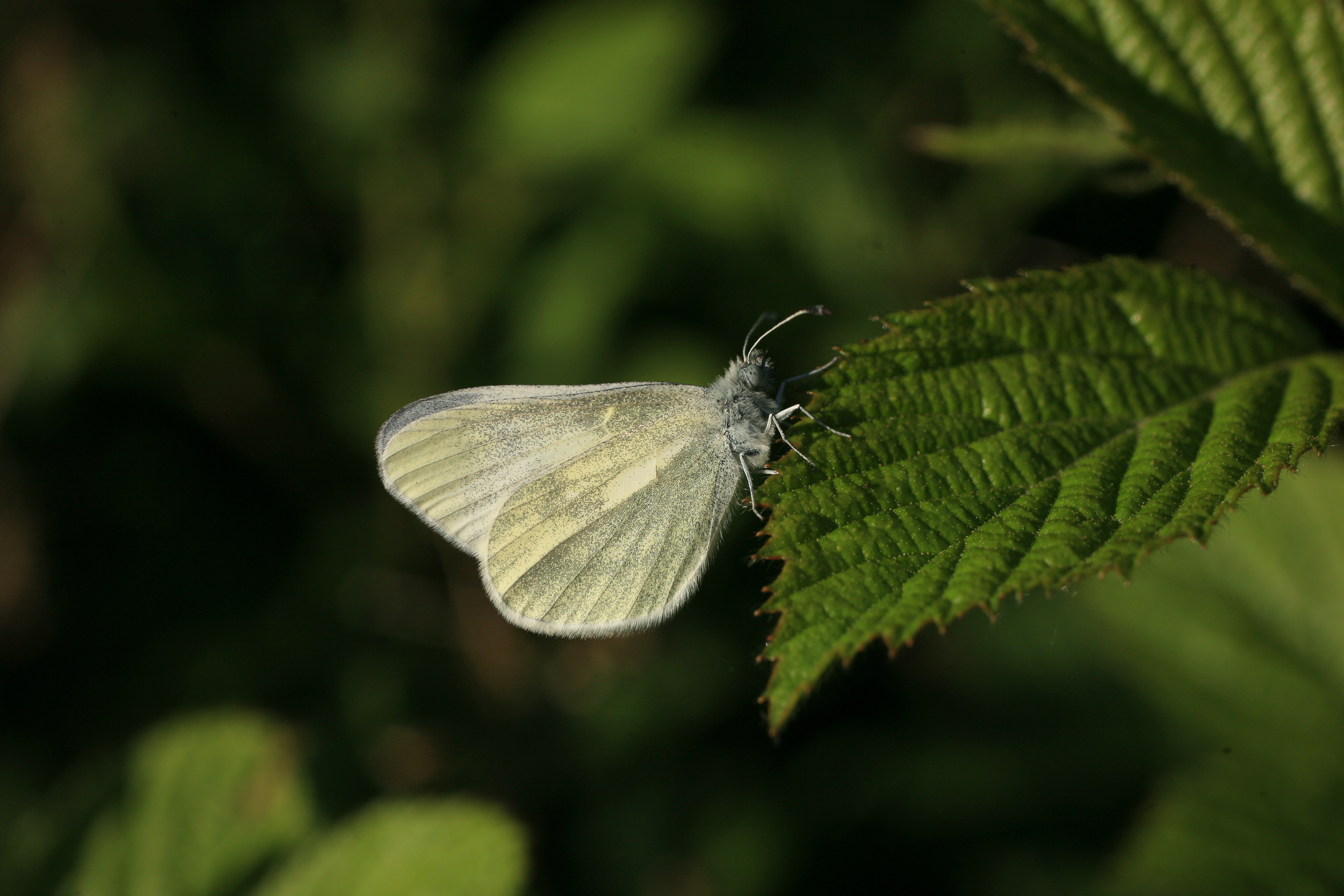
Although the wood whites at the two locations look and behave identical, at least to my eyes, these are two distinct species. The wood white seen in the Burren and adjoining areas in County Galway, is the species Leptidea sinapis. But up until very recently, until 2011 in fact, it was thought that the wood white found in the rest of the country was Réal’s wood white, Leptidea reali. But a study using genetic analysis to understand in more detail the relationships between L. sinapis and L. reali discovered that lurking within the L. reali was another species, L. juvernica or cryptic wood white. And it was this species, cryptic wood white L. juvernica which occurs in the rest of Ireland, not Réal’s wood white. It is remarkable to think that even with butterflies, the best studied insect group of all, there are still some fairly fundamental discoveries to be made. Mind you, should you feel the urge to take up your butterfly net to go off and make new discoveries, you are likely to be disappointed. The modern day entomologist is much more likely to be equipped with an electron microscope and a DNA barcode than a butterfly net. But, at least it means that I can get two for the price of one, wood white #9 and cryptic wood white #10.
Speckled wood #1, Dingy skipper #2, Wall brown #3, Common blue #4, Holly blue #5, Small blue #6, Meadow brown #7, Ringlet #8, Wood white #9 & Cryptic wood white #10.
